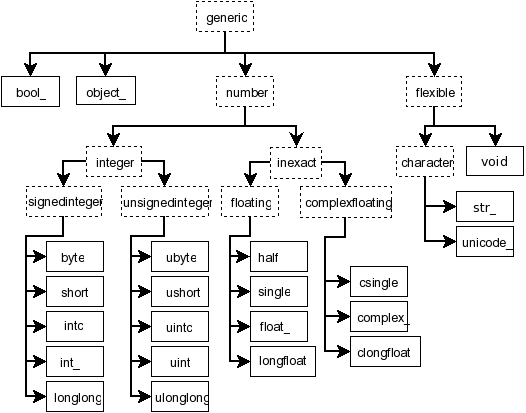add(x1,x2,/[out,where,casting,order,...]) |
|
subtract(x1,x2,/[,out,where,casting,...]) |
|
multiply(x1,x2,/[,out,where,casting,...]) |
|
divide(x1,x2,/[,out,where,casting,...]) |
|
true_devide(x1,x2,/[,out,where,casting,...]) |
|
floor_devide(x1,x2,/[,out,where,casting,...]) |
|
logaddexp(x1,x2,/[,out,where,casting,...]) |
ln(x1+x2) |
logaddexp2(x1,x2,/[,out,where,casting,...]) |
log_2 (x1+x2) |
negative(x,/[,out,where,casting,order,...]) |
|
positive(x,/[,out,where,casting,order,...]) |
|
power(x1,x2,/[,out,where,casting,order,...]) |
x1^x2 |
float_power(x1,x2,/[,out,where,casting,...]) |
x1^x2 |
remainder(x1,x2,/[,out,where,casting,...]) |
求余/取模 |
mod(x1,x2,/[,out,where,casting,order,...]) |
求余/取模 |
fmod(x1,x2,/[,out,where,casting,order,...]) |
求余/取模 |
divmod(x1,x2,/[,out1,out2],/[out,...]) |
|
absolute(x,/[,out,where,casting,order,...])/abs |
|
rint(x,/[,out,where,casting,order,...]) |
|
sign(x,/[,out,where,casting,order,...]) |
|
heaviside(x1,x2,/[,out,where,casting,...]) |
阶跃函数 |
conj(x,/[,out,where,casting,...]) |
对偶 |
exp(x,/[,out,where,casting,order,...]) |
|
exp2(x,/[,out,where,casting,order,...]) |
|
log(x,/[,out,where,casting,order,...]) |
|
log2(x,/[,out,where,casting,order,...]) |
|
log10(x,/[,out,where,casting,order,...]) |
|
expm1(x,/[,out,where,casting,order,...]) |
计算exp(x)-1 |
log1p(x,/[,out,where,casting,order,...]) |
计算ln(x+1) |
sqrt(x,/[,out,where,casting,order,...]) |
非负平方根 |
square(x,/[,out,where,casting,order,...]) |
|
cbrt(x,/[,out,where,casting,order,...]) |
立方根 |
reciprocal(x,/[,out,where,casting,order,...]) |
倒数 |
gcd(x,/[,out,where,casting,order,...]) |
最大公约数 |
lcm(x,/[,out,where,casting,order,...]) |
最小公倍数 |
